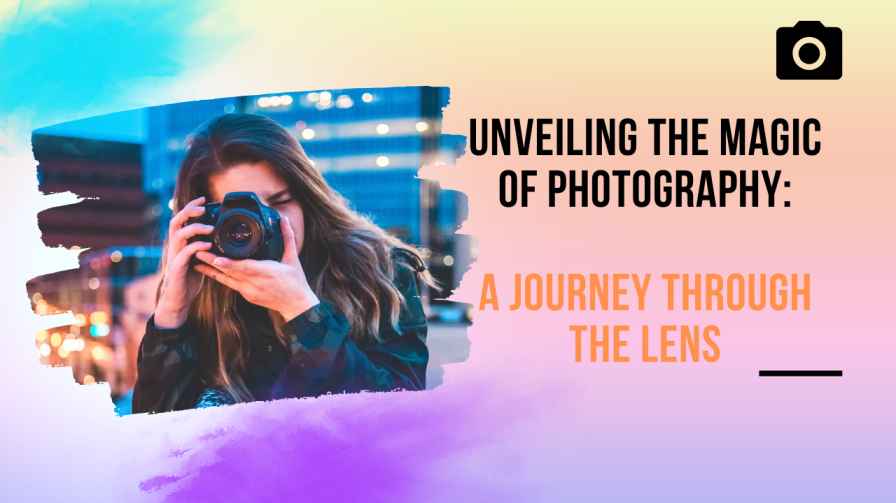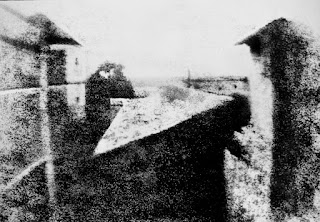
In our fast-paced world, photography stands as a magical tool that freezes moments in time, allowing us to hold onto memories, emotions, and stories forever. Whether it's the tranquility of a sunset, the vibrant energy of a bustling street, or the warmth of a loving embrace, photography has a unique ability to stir emotions and weave narratives like no other art form. In this exploration, we'll delve into the enchanting world of photography, from its fascinating history to its technical intricacies and profound impact on our lives.
**The Story Behind Photography**
Photography's tale is as captivating as the images it captures. It all began centuries ago, with the curious minds of ancient civilizations experimenting with ways to capture images. But it wasn't until the 19th century that photography, as we know it, took its first breaths.Picture this: a French inventor named Nicéphore. Niépce created the world's first photograph, "View from the Window at Le Gras," in the 1820s. From there, Louis Daguerre and William Henry Fox Talbot introduced the daguerreotype and calotype, respectively, making photography more accessible to people. Fast forward to the late 19th century, and George Eastman's roll film invention opened the floodgates for amateur photographers to document their lives and surroundings.
Jump ahead again, and we find ourselves in the digital age. Digital cameras and smartphones have revolutionized photography, making it more accessible and democratic than ever. Now, anyone with a smartphone can capture and share moments with the world in an instant.
**The Artistry of Composition**
Photography isn't just about pointing and shooting—it's about crafting a visual story that captivates the viewer and communicates a message or feeling. One essential principle is the rule of thirds, which involves dividing the frame into thirds both vertically and horizontally. Placing key elements along these lines or at their intersections creates balance and visual interest.Leading lines are another powerful tool in a photographer's arsenal. These lines draw the viewer's eye towards the focal point of the image, guiding them through the scene and adding depth. Whether it's a winding road or a row of trees, leading lines can transform an ordinary scene into something extraordinary.
And let's not forget about lighting! The golden hour, that magical time just after sunrise and before sunset, bathes everything in a warm, soft light that's perfect for capturing stunning photos. But even harsh midday sunlight can be tamed with the right techniques, allowing photographers to create captivating images in any lighting conditions.
**Mastering the Technical Side**
Beyond artistic composition lies the technical side of photography. Understanding concepts like aperture, shutter speed, and ISO is essential for achieving great results.
The aperture controls the size of the opening in the lens, affecting both exposure and depth of field. A wide aperture (small f-stop number) creates a shallow depth of field, perfect for isolating subjects against a blurred background. Meanwhile, a narrow aperture (large f-stop number) increases depth of field, keeping more of the scene in focus.
Shutter speed determines how long the camera's shutter remains open, affecting motion blur. A fast shutter speed freezes action, while a slow shutter speed creates a sense of motion. ISO measures the camera sensor's sensitivity to light, with higher ISO settings allowing for shooting in low-light conditions.
But it's essential to use post-processing wisely. Over-editing can detract from the authenticity of an image, so it's crucial to strike a balance between enhancing the photo and preserving its natural beauty.
In today's digital age, photography has become more accessible than ever. Social media platforms like Instagram and Flickr have democratized photography, allowing people from all walks of life to share their stories and connect with others around the world.
The aperture controls the size of the opening in the lens, affecting both exposure and depth of field. A wide aperture (small f-stop number) creates a shallow depth of field, perfect for isolating subjects against a blurred background. Meanwhile, a narrow aperture (large f-stop number) increases depth of field, keeping more of the scene in focus.
Shutter speed determines how long the camera's shutter remains open, affecting motion blur. A fast shutter speed freezes action, while a slow shutter speed creates a sense of motion. ISO measures the camera sensor's sensitivity to light, with higher ISO settings allowing for shooting in low-light conditions.
**The Magic of Post-Processing**
In the digital age, post-processing has become an integral part of photography. Software like Adobe Lightroom and Photoshop allows photographers to fine-tune their images and unleash their creativity. Whether it's adjusting exposure, color balance, or contrast, post-processing gives photographers the tools they need to transform their photos into works of art.But it's essential to use post-processing wisely. Over-editing can detract from the authenticity of an image, so it's crucial to strike a balance between enhancing the photo and preserving its natural beauty.
**Photography's Impact on Society**
Photography isn't just about pretty pictures—it's a powerful tool for communication and social change. From iconic images that document historical events to intimate portraits that celebrate human diversity, photography has the power to inform, inspire, and provoke thought.In today's digital age, photography has become more accessible than ever. Social media platforms like Instagram and Flickr have democratized photography, allowing people from all walks of life to share their stories and connect with others around the world.



Please let me know if you have any questions ConversionConversion EmoticonEmoticon